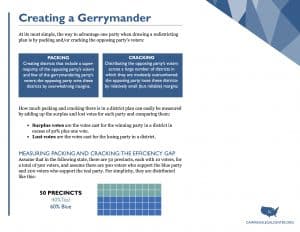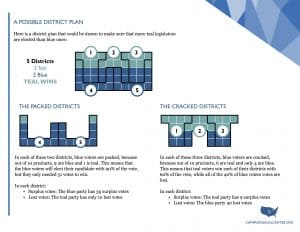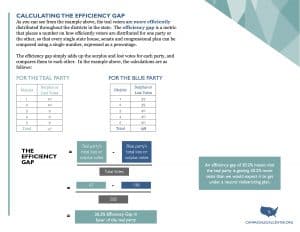FOR IMMEDIATE RELEASE
September 22, 2016
Southern Coalition for Social Justice Files Data-Driven Partisan Gerrymandering Lawsuit
Challenge adopts standard for measuring partisan advantage in redistricting
DURHAM, N.C. – The Southern Coalition for Social Justice and the Campaign Legal Center filed a complaint today on behalf of the League of Women Voters of North Carolina and numerous individual voters, arguing that North Carolina’s 2016 congressional redistricting plan violates the First and Fourteenth Amendments of the U.S. Constitution. League of Women Voters of North Carolina v. Rucho was filed in the U.S. District Court for the Middle District of North Carolina. North Carolina’s 2016 redistricting plan was drafted during a special legislative session after a federal three-judge panel ruled that previous maps were unconstitutional racial gerrymanders.
“The Constitution guarantees everyone’s right to participate equally in an electoral system that does not discriminate against them because of their beliefs,” said Anita Earls, executive director of the Southern Coalition for Social Justice. “It’s clear that the intent and effect of creating North Carolina’s 2016 congressional maps were to manipulate the democratic process. The result disparages voters and ensures that one party can maintain political power even when a majority of the state’s voters do not support them.”
In 1986, the U.S. Supreme Court held that partisan gerrymandering claims present a legal controversy that courts could potentially resolve. However, to date, the court has not agreed on an acceptable standard to determine when a partisan gerrymander is unconstitutional. League of Women Voters of North Carolina v. Rucho offers an empirical analysis to demonstrate the extent to which an extreme gerrymander exists. That analysis is called the efficiency gap, which captures the packing and cracking among a plan’s districts in a single number.
Developed by Nicholas Stephanopoulos and Eric McGhee, the efficiency gap is the difference between the parties’ respective wasted votes in an election, divided by the total number of votes cast. Wasted votes are: (1) any vote cast for a losing candidate; and (2) votes cast for a winning candidate in excess of the number needed to win. More information about wasted votes and how efficiency gaps are calculated is below.
According to the complaint, North Carolina’s efficiency gaps in 2012 and 2014 “exhibited pro-Republican partisan biases larger than 25 percent—[] by far the worst in North Carolina’s modern history and at the far edge of the nationwide distribution.” (p. 16).
“When it comes to congressional districts, North Carolina’s are an extreme and egregious partisan gerrymander. Packing and cracking voters in districts based on their political ideology and voting history classifies voters in an invidious manner unrelated to any legitimate legislative objective,” said Gerry Hebert, Executive Director of the Campaign Legal Center. “Radical partisan gerrymandering like that in this case turns democracy on its head. For the sake of North Carolina voters and voters across our nation, this practice must come to an end. The implementation of our efficiency gap standard would go a long way in ensuring that every voter is entitled to equal protection under the law and having their voice heard.”
Click here to read the full complaint: https://southerncoalition.org/wp-content/uploads/2016/09/Complaint-Final.pdf
About the Efficiency Gap:
The efficiency gap determines how close a redistricting plan is to reaching partisan symmetry, which means whether or not similarly-situated political parties are treated equally in a redistricting plan. According to the Campaign Legal Center, “[a] lower number means both parties are treated more equally in the way they can convert votes into seats. A higher number means one party has an advantage in the way it translates its vote share into seat share.”1
In an article explaining how to efficiency gaps are calculated, Nicholas Stephanopoulos provides the following explanation and example:2
The efficiency gap is simply the difference between the parties’ respective wasted votes in an election, divided by the total number of votes cast. Wasted votes are ballots that don’t contribute to victory for candidates, and they come in two forms:lost votes cast for candidates who are defeated, and surplus votes cast for winning candidates but in excess of what they needed to prevail. When a party gerrymanders a state, it tries to maximize the wasted votes for the opposing party while minimizing its own, thus producing a large efficiency gap. In a state with perfect partisan symmetry, both parties would have the same number of wasted votes.
Suppose, for example, that a state has five districts with 100 voters each, and two parties, Party A and Party B. Suppose also that Party A wins four of the seats 53 to 47, and Party B wins one of them 85 to 15. Then in each of the four seats that Party A wins, it has 2 surplus votes (53 minus the 51 needed to win), and Party B has 47 lost votes. And in the lone district that Party A loses, it has 15 lost votes, and Party B has 34 surplus votes (85 minus the 51 needed to win). In sum, Party A wastes 23 votes and Party B wastes 222 votes. Subtracting one figure from the other and dividing by the 500 votes cast produces an efficiency gap of 40 percent in Party A’s favor.

How Gerrymandering works.

How districts are packed and cracked.

Calculating the efficiency gap.
1 – Hebert, J. G., & Greenwood, R. (n.d.). Make Democracy Count: Ending Partisan Gerrymandering (Rep.). Retrieved September 20, 2016, from http://www.campaignlegalcenter.org/sites/default/files/CLC_PartisanGerrymandering_Report.pdf (p.5)
2 – Stephanopoulos, N. (2014). Here’s How We Can End Gerrymandering Once and for All. Retrieved September 20, 2016, from https://newrepublic.com/article/118534/gerrymandering-efficiency-gap-better-way-measure-gerrymandering
###
